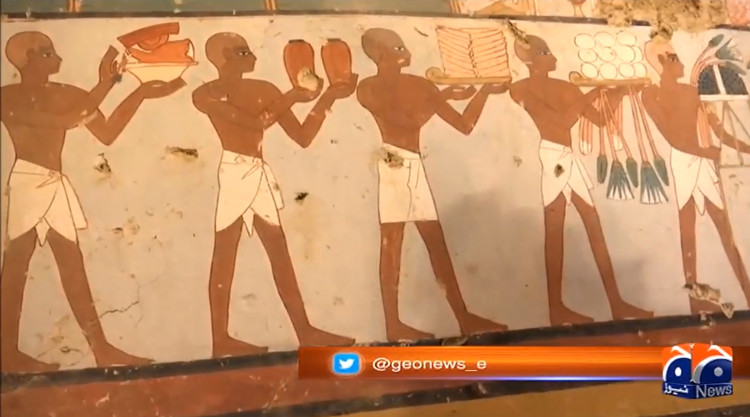Excavating Egyptian tomb 3,500 years contains mummies
Archaeologists conducted the second study built about 3,500 years ago in Luxor city.
Egyptian authorities announced the discovery of mummies and hundreds of artifacts in two ancient tombs built about 3,500 years ago on the west bank of the Nile, Luxor city, Sun yesterday reported.

A tomb has a yard with mud and stone walls surrounding it.
"This is really a special day," said Khaled al-Anani, Egyptian Minister of Antiquities. Archaeologists had previously known these two tombs, but this was the first time they had discovered inside. Al-Anani said the new findings will help boost the country's tourism.
A tomb has a yard with mud and stone walls surrounded by a burial ground leading to 4 other rooms. Artifacts are found mainly in wooden casket pieces. The drawings and carvings on the wall indicate that the tomb was built between King Amenhotep II and King Thutmose IV, and two pharaohs were in the 18th dynasty.
The remaining tomb has 5 entrances leading to a rectangular hall with two burial holes in the north and south. The inner artifact includes funeral items, clay pots, 450 statues and especially a cloth-wrapped mummy, possibly a high-ranking person. On the tomb tomb carved the name of King Thutmose I of the 18th dynasty.
Since early 2017, the Egyptian Antiquities Department has discovered many monuments in different locations, including a royal goldsmith's tomb belonging to the same royal court and also in Luxor city.
- Discover 'horror' food of Egyptian mummies
- Catacombs contain more than 50 mummies of Egyptian royalty
- Successfully deciphered the tiny red face of ancient Egypt
- The screaming mummy was intriguing in the Egyptian tomb
- Discover the oldest Sun watch in Egypt
- The mummy of a woman intact 3,000 years in the ancient tomb of Egypt
- Discover dozens of mummies in ancient Egyptian tombs
- Egyptian mummy floating on the canal
- Egypt discovered nearly 60 mummies during the New Kingdom period
- Shocking discovery of Egyptian mummies
- Egyptian mummy 3,000 years of eternal rest by the people of today
- Move 3 Egyptian mummies to check DNA
 Discovered an ancient centipede fossil 99 million years old
Discovered an ancient centipede fossil 99 million years old Discovered bat-like dinosaurs in China
Discovered bat-like dinosaurs in China Discovered a 200-year-old bronze cannon of the coast
Discovered a 200-year-old bronze cannon of the coast Discover 305 million-year-old spider fossils
Discover 305 million-year-old spider fossils